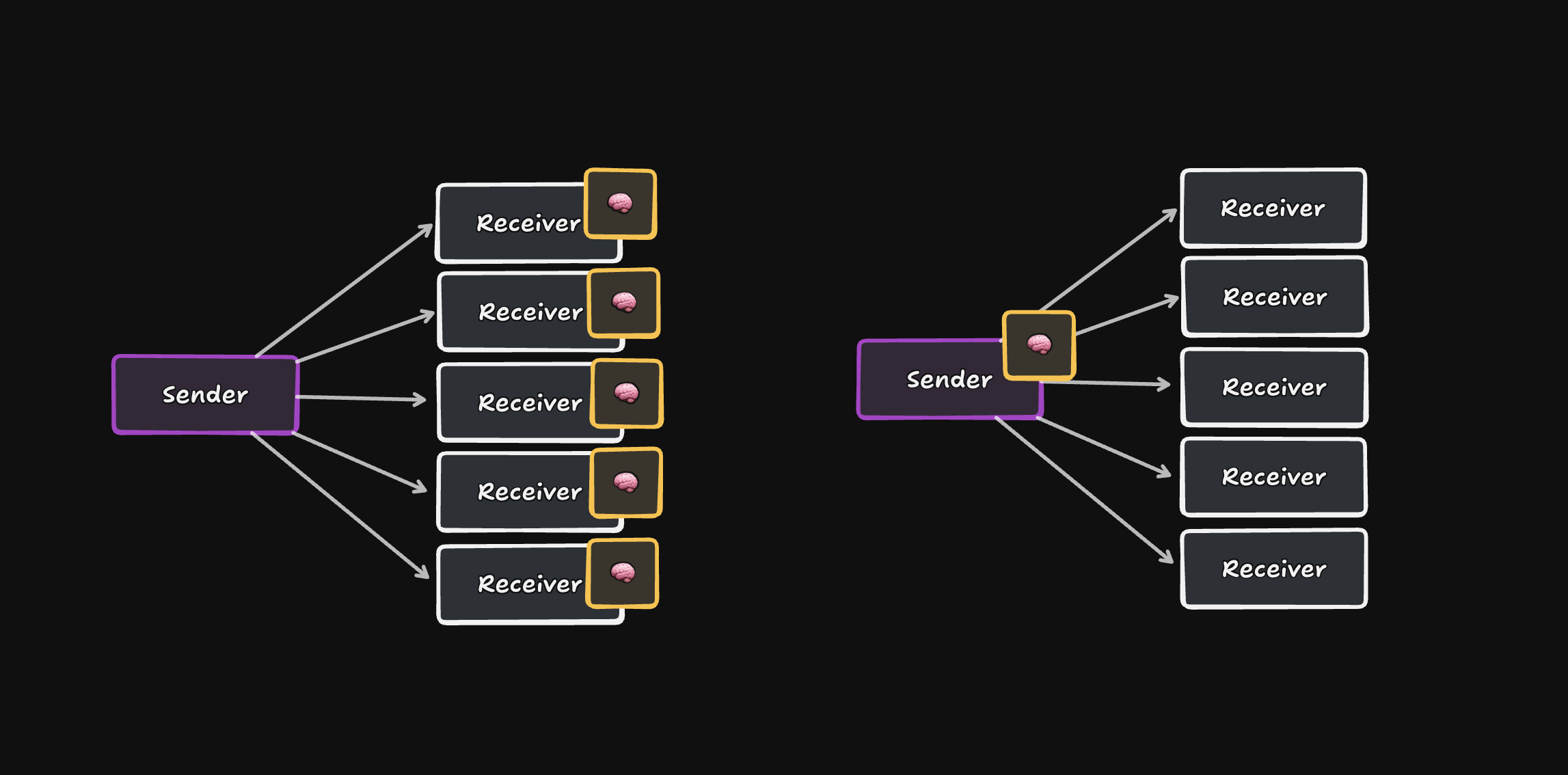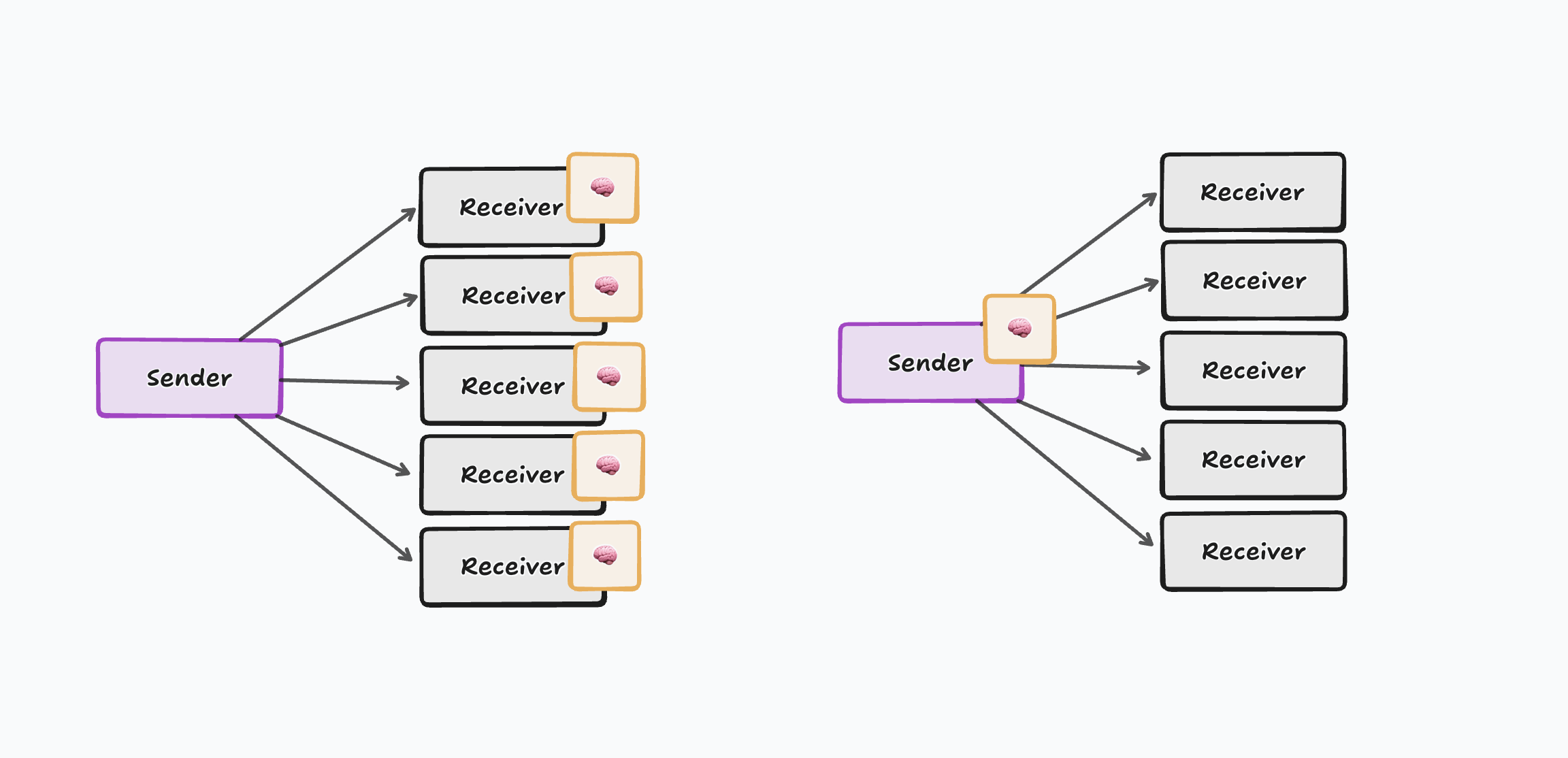Famously GitLab, Doist, Basecamp are companies that work async first.
While remote first means you don’t assume people share the same location, async first means you don’t assume they share the same time. If people work at different times, synchronous communication (like live meetings) becomes impossible.
ngl, strange concept for me as a human, growing up talking my whole life synchronously.
You are not expected to be available all the time
Why do companies work async first?
Hiring top talent is one of the top challenges for companies.
As a first step, remote-first hiring opened the door to other cities. This was followed by async first, to become time zones independent.
Remote meetings are strange, they often miss a clear agenda, disrupt deep work, drain mental and physical energy, and at the end only one person is talking while others listen. At the end little is documented. And I mean little good documentation, not your AI transcripts that lack context outside of the meeting.
Cost
Similarly to underestimating cognitive load, the cost of interruption is often underestimated, something I like to call change cost. Studies showed that it takes roughly 23 minutes to get back to work after interruption. I'd argue that this is even higher for deep work. In addition to opportunity cost, there is the time that the participants could have spent on other work.
Benefits
There are lots of benefits that e.g. GitLab laid out in their handbook.
- Boosts autonomy
- Improves efficiency
- Is inclusive
- Lowers stress
- Encourages thoughtfulness
- Creates context
Async communication is inclusive. Similarly to meditation and DEI programs, async communication shows positive effects productivity (ref). Almost like it would be a positive drug package leaflet.
- Neurodivergent people work during their focus windows
- Parents can balance care work
- Night owls can work when they’re sharpest
Writing is thinking
Paul Graham famously described that "you don't write because you understand, but you understand because you write" in his essay from 2005. When talking, the processing work is pushed to the receiver. This is the usual setting in a synchronous meeting. When writing, the processing work is owned by the sender.


Processing work needs to be done before the message is sent to be efficient.
The processing work must be done before the message is sent to be efficient. Most meetings are 1:n communication, where one person speaks and the others listen. This is inefficient, as the receiver has to process the message while the sender is still thinking.
This is one of the reasons for the Amazon's 6-pager system where a memo is sent to the team before a meeting.
Rules
1. Clear Intention
Explain why you communicate in the first place, by directly stating what action do you expect to be followed by your communication.
Examples:
- I require approval here
- I only want to share this with you
- Can you provide feedback on this?
- I want to make a decision on this until tomorrow EOD
- I want to poll the team on this
2. Use High Bandwidth Communication
You can see, hear, smell, taste, and touch. At digital work we mostly use our sight and hearing sense to process information. Using a image often helps, as one image says more than a thousands words.
A video of your desktop tells a thousand words 24 times per second (see Loom). Adding your face to the bottom left, adds the information of tone and intention. This makes a high bandwidth communication. Adding these layers can improve communication drastically.
3. Context
Assume the reader knows nothing.
Provide links, tickets, charts, Slack threads, everything.
4. Conclusion, key points and support points
Structured your communication in a way that the reader can easily understand the message, first the conclusion, then key points and then support points.
Hi team,
We ran a big study on user behavior and gathered lots of data.
45% of churned users mentioned
confusion during setup.
Users who completed onboarding stayed longer.
Support tickets dropped in the test group.
We think onboarding might be important for retention. We can look into
this further later.
Let’s discuss what to do next.
Hi team,
Recommendation: Improve customer retention by redesigning the onboarding process.
Main Findings:
45% of churned users mentioned confusion during setup as their main reason for leaving.
Customers who completed onboarding are 3× more likely to stay beyond 6 months.
Support tickets from new users dropped by 40% after guided onboarding was introduced in our test group.
How did we arrive at this?
We analyzed feedback from 120 churned users and 250 active users.
We tracked engagement metrics before and after introducing guided onboarding.
We conducted 10 usability tests showing clear drop-off during account setup steps.
Let’s prioritize redesigning onboarding in Q1 to maximize retention
impact.
5. Leverage Threads
Use threads for use cases like discussing a topic with multiple replies or sharing multiple messages on the same topic.
Hi team, does anyone have a good idea for the onboarding process?
Yes, you can find the onboarding process in the docs.
If you want, we can discuss this in the meeting.
I just also found a great article about it.
Hi team, does anyone have a good idea for the onboarding process?
6. Use RFC over threads
Threads with more than 10 messages probably should be a RFC. Threads are inefficient, as they are linear. Two context can not be discussed at the same time without confusion. RFCs allow for in-place comments with multiple threads, which is more efficient.
7. Irony is often low performance communication
Can you take this for me? 😉
Irony prevents honesty (it’s literally the opposite). Low honesty leads to low trust, which results in low performance. It's a form of prevention to show yourself, be vulnerable in front of each other which is the foundation for trust.
Wink emojis are a high indication of irony. They are a placeholder for something that is not being said. Do not use them expcet your are sure its clearly funny for both sides.
8. Resolve the Conversation
If you are asked a question, keep the conversation going until it’s resolved. Do not let the other person do all the work. Offer alternative options.
Hey do you want to grab a coffee on 11am?
Hey do you want to grab a coffee on 11am?
9. Don't use an opposite that is never true
If you say something where the opposite is never true, chance are high you are not thinking clearly. Rephrase your thought. "We should not build a huge monolith that can do everything". Nobody wants to build a huge monolith that can do everything. State the opposite instead. "We should aim for a modular system with clear boundaries".
Synchronous Communication
As a rule of thumb, synchronous communication excels at open-ended brainstorming when the problem isn’t yet well defined. However, once you know your goal and need to make a decision, asynchronous communication is preferable. An RFC followed by a Q&A session has proven to be an effective decision-making process.